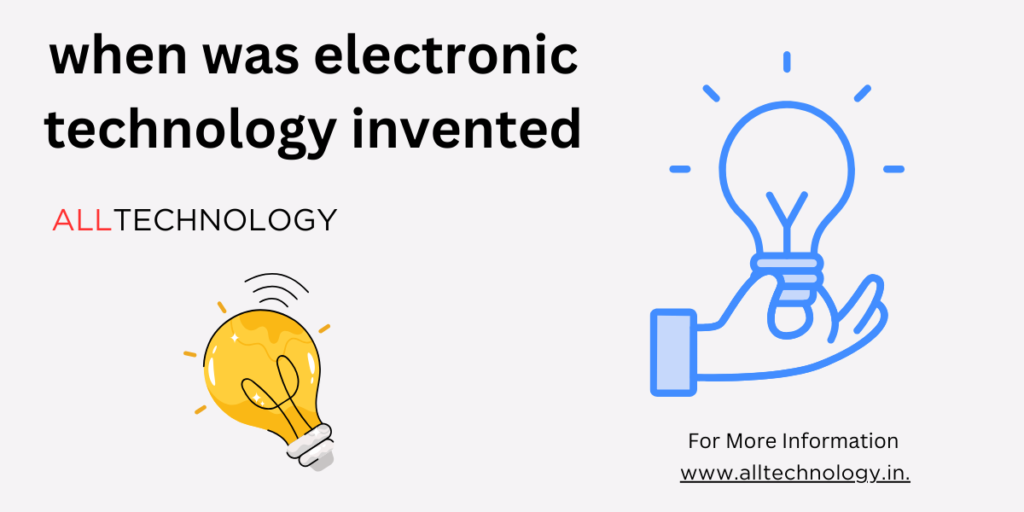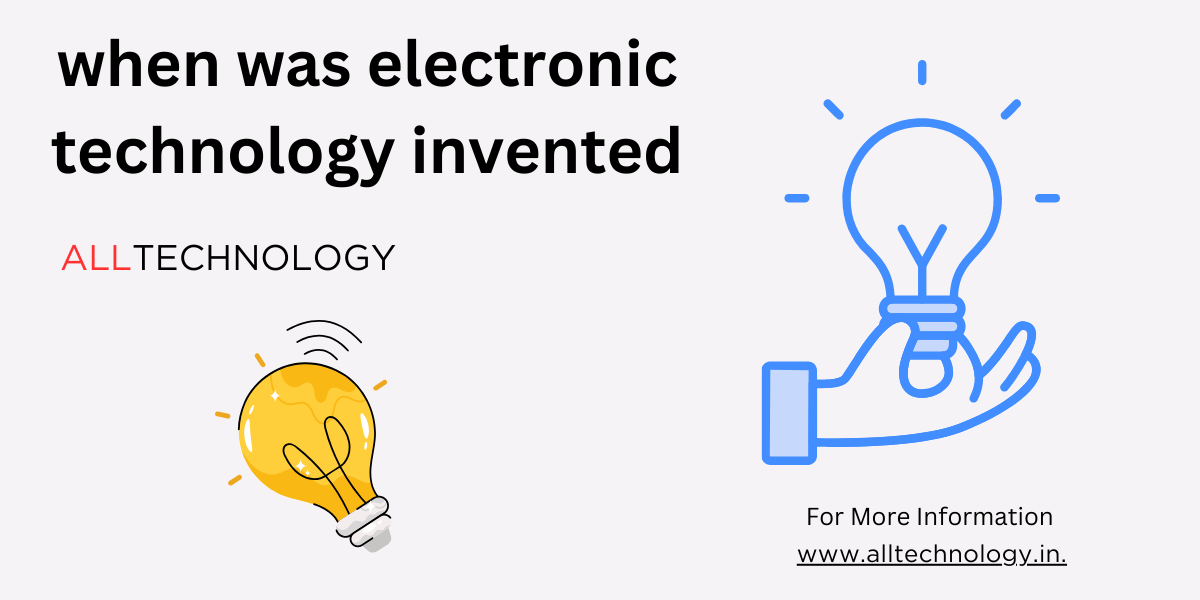Introduction
Hello Bloggers welcome alltechnology blog. In this blog you will learn“when was electronic technology invented”. So friend, I will tell you “when was electronic technology invented” what is the reason behind it and what should you do for it.

The field of electronics began to evolve separately from that of electricity in the late 19th century. The identification of the electron by the English physicist Sir Joseph John Thomson in 1897 marked a significant milestone. Around the same time, the American physicist Robert A. Millikan measured the electric charge of the electron12. This discovery laid the foundation for the electron age and the subsequent development of electronic devices.
The vacuum tube, invented by Sir John Fleming in 1904, played a crucial role in amplifying and rectifying small electrical signals. This invention inaugurated the field of electronics, which has since led to remarkable advancements in technology, including transistors, integrated circuits, lasers, and optical fibers3. Today, we continue to witness an electronic revolution that rivals the industrial revolution of the 19th century.
